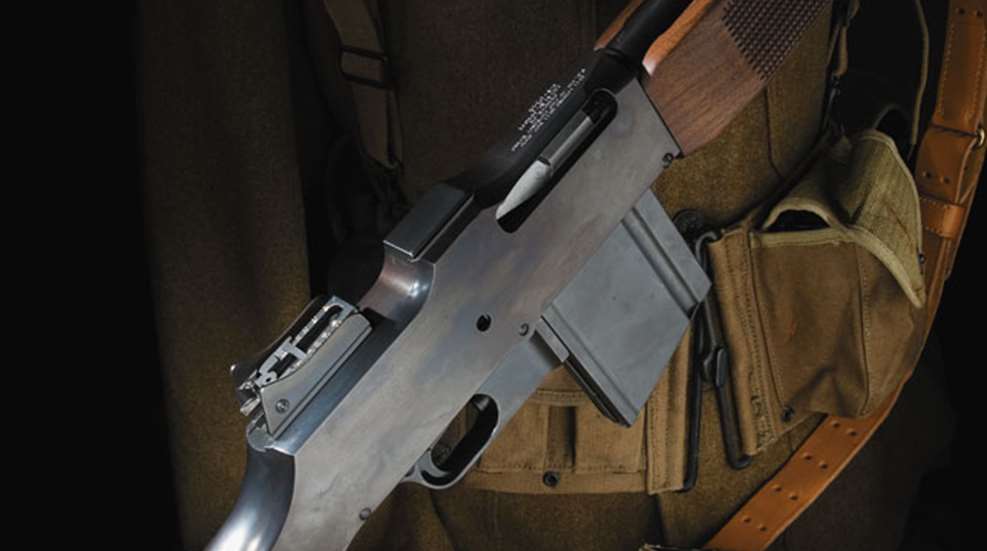
If you watched “Top Shot” last night, you got a glimpse of the greatest automatic rifle—notice I did not use the words “light machine gun”—of all time. That gun is the John Moses Browning-designed Model 1918 Browning Automatic Rifle. Browning actually created gas-operated self-loading firearms. Noticing the disturbance in the grass caused by the passing of a bullet out of the muzzle, Browning hooked a “flapper” onto the barrel of a lever-action that harnessed the expanding propellant gasses through a hole drilled in the barrel. He used the force of the gas to move a lever linked to the action to cycle it. That principal, what we call gas-operation, was applied to the Colt Machine Gun Browning designed in 1889, better known as the Model 1895, and later the Model 1914 called the “Potato Digger” and before eventually reaching the Browning Automatic Rifle.
Browning knew that the United States would eventually enter the Great War. A true patriot, he set out to design the tools American troops would need to fight in the stalemate of the trenches. A reliable belt-fed machine gun and an automatic rifle were presented to the Ordnance Department, demonstrated at Congress Heights on Feb. 27, 1917, with the former adopted as the Model 1917 Machine Gun and the latter as the Model 1918 Browning Automatic Rifle. Browning took no royalties from the U.S. government for either design, although after the war the manufacturing rights for both guns went to Colt in Hartford, Conn., and Fabrique Nationale in Liege, Belgium.
The gas-operated BAR, a “machine rifle” in contemporary U.S. Ordnance Department, lingo, could fire on full or semi-automatic, be carried by one man and could be used as a semi-automatic rifle—an accurate one—or it could be used to fire at cyclic rate of generally between 500 and 600 rounds per minute. The BAR gunner actually was issued a belt with a cup on its right side so it could be used for suppressing the enemy trenches with “walking fire” fire from the hip. It had excellent sights with a blade front and a rear aperture.
Later the U.S. Ordnance Department tried to turn the BAR into something it was not. As magazine fed automatic rifles went, it was the best. As a general purpose light machine gun, it was a very reliable failure, especially when compared to the German MG34 or MG42. Even against the best box magazine fed light machine gun of World War II, the British Bren, the BAR’s limited magazine capacity and lack of a quick change barrel and relatively light weight made it less than optimum for sustained fire. The Ordnance department added a bipod (which soldiers and Marines discarded as lost to enemy action, messed around with the rate of fire “slow” and “fast” and other contraptions and widgets to turn the BAR into something it was never meant to be, including a curious rear monopod. When used as intended, as a machine rifle, there was none better.




































